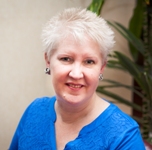
| Archive | www.conventionindustry.org | Follow Us: |
Continuing Education – What Counts for CMP?
![]() Print this Article | Send to Colleague
Print this Article | Send to Colleague
 By Joanne Dennison, CMP
By Joanne Dennison, CMPIf someone wants to recertify their CMP credential, one of the requirements for most applicants is 25 hours of continuing education. Three of the most common points of confusion are:
- What is a continuing education hour?
- What content counts?
- Where can I get continuing education that "counts"?
What is an Hour?
An hour, which is called a clock hour on the applications, may also be called a "contact hour" or "classroom hour." A clock hour is one hour spent in a structured learning environment, for example, with a presenter, instructor, facilitator, discussion leader or panel. It can be in person or virtual. It does not include trade shows, recreation or entertainment (unless there is a structured learning component), or committee meetings.
A structured learning environment should have measurable learning objectives listed specifically in the description of the session. This will also help when determine what content will count for CMP credit.
CEUs (Continuing Education Units) are sometimes used interchangeably with clock hours. The International Association for Continuing Education and Training (IACET) developed the Continuing Education Unit (CEU) in 1970 and is the caretaker of the CEU. But the term "CEU" often causes confusion with CMP candidates because the true definition of "CEU" is calculated differently than a "clock hour." But there is an easy way to determine your continuing education hours no matter what the unit is called: CIC awards continuing education on an hour-for-hour basis down to the quarter hour. Therefore, if you participate in an activity that is 90 minutes, you will report 1.5 CE hours on your application. It is that easy.
What Content/Topics Count?
This question has become a big one since the CMP-International Standards (CMP-IS) went into effect in 2012. The reality is that the requirements are not that different than they were under the former CMP Blueprint.
The CMP Blueprint was the body of knowledge for the CMP, based on the 27 Functions of Meeting Planning. This outline is updated every five years based on changes in the meetings industry. If you applied, or recertified prior to 2012, your continuing education had to pertain to one of the 27 functions.
When the CMP-IS was put into place, it replaced the 27 Function Blueprint. The required areas of knowledge are now in the 10 Domains of the CMP-IS. This too was designed in response to updates to the knowledge needed to be a successful meeting professional. All continuing education now has to pertain to one of the 10 Domains. On the application it must be noted which Domain to the activity aligns with. The complete CMP-IS is on the Convention Industry Council website. Those completing an application, can easily find the correct Domain in the CMP-IS.
Some of the time it is very easy to see what Domain a program pertains to, because it is right in the title of the presentation. For example a session called "Handling Risk" is going to fall in Domain C-Risk Management. When it is not as obvious, it should be in the description and learning objectives for each educational session attended. If you cannot find the connection between the skills in the Domains and the learning objectives of the program, it most likely does not count for CE credit.
Where Can I Get Continuing Education that "Counts"?
Many of us get our clock hours by attending industry events sponsored either by our professional associations or by corporations such as hotel and media companies. Continuing education can also be found through colleges or community organizations. As long as it is a structured learning environment and the learning objectives fit the Domains, it counts. The activity cannot be a promotion for any organization or its products or services, although it can be sponsored by anyone.
The CMP office at CIC does not have to approve each session before it is offered. It is up to the applicant to choose the right sessions that fulfill a subject area in the CMP-IS Domains. If the sponsoring organization wants to have their attendees to receive CE credits for their offerings, they need to be familiar with the CMP-IS Domains, and pick the topics and presenters accordingly. If they want it to be very "user-friendly" for the attendee they should make sure the learning objectives clearly show how it fits into the Domains, and can list the Domain with the session.
In the end, however, the applicant is the one responsible for making sure they are familiar with the CMP-IS, look for continuing education that fulfills the subject area, and completes the application correctly.
I hope I have cleared up some of the myths and rumors with this article, and have provided clear steps on how to fill in your CMP recertification application.
Joanne Dennison, MSEd, CMP, has been an educator in the meetings industry for more than 15 years, including preparing people for the CMP exam. This article is based on commonly asked questions she receives from people interested in the CMP process.

|
Convention Industry Council 700 N. Fairfax Street, Suite 510 Alexandria, VA, USA, 22314 Tel: 571-527-3116 |
Published by Naylor, LLC in association with the Convention Industry Council
